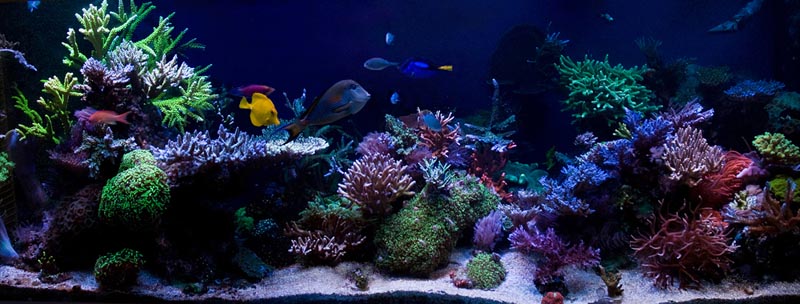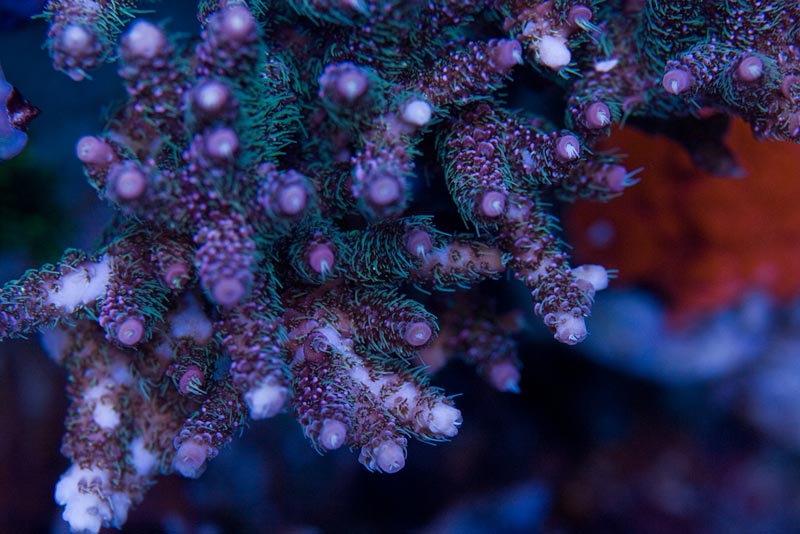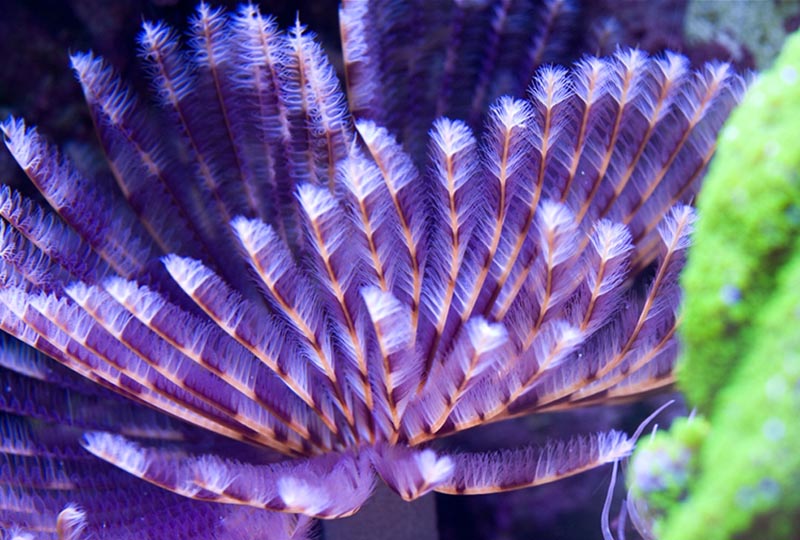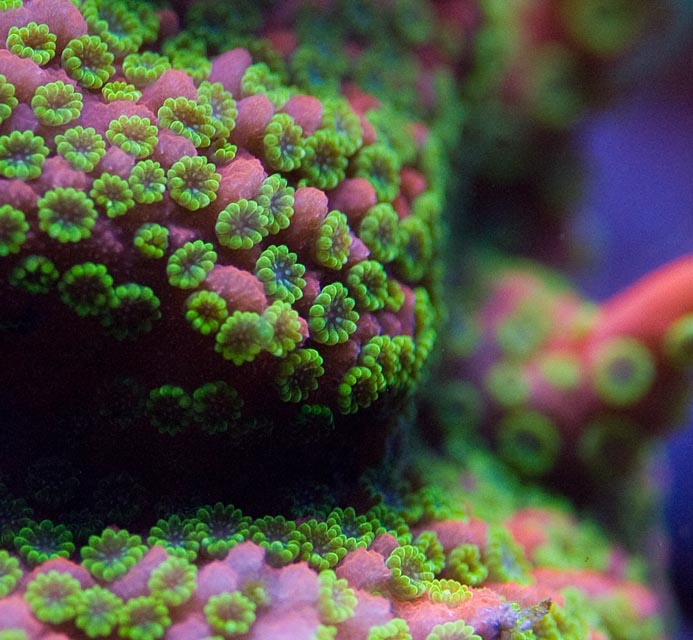 May 2013 Tank of the Month
May 2013 Tank of the Month
May 2013 Tank of the Month
Scott Swanson's (swannyson7) 180 US-gallon Reef Aquarium
 |
Introduction
First off, I’d like to the thank Reef Central and the RC community for recognizing my aquarium. It is truly an honor to have my aquarium featured alongside some of the amazing tanks that have won TOTM. My name is Scott Swanson and I have been keeping aquariums since I was seven years old. I originally started off with goldfish, as most children do, but eventually expanded my knowledge to cichlids and the freshwater community tanks. In 1997, I set up my first saltwater tank, a 55g fish only with liverock (FOWLR) that was grossly overstocked. Looking back, I am amazed that I managed to keep the fish alive for the next few years with the little knowledge I had. This was before I had discovered reef forums and I was going by a few outdated books that I found at my local library. Five years later, my roommate at West Point introduced me to the wonderful world of reef tanks. We set up a 20L in the barracks with a couple damsels and a few easy-to-keep soft corals. He pointed me toward reefing forums, and even gave me the equipment needed to sustain a reef. Upon leaving West Point, I ran a 55g tank with 110W of power compact lighting, Maxijet powerheads, and a modified Seaclone skimmer. It was a pretty rudimentary system, but I successfully housed LPS & soft corals for the next couple years. I continually set up tanks, only to tear them down a few months later as I was deployed. With each new system, I gained a bit of knowledge and made several changes along the way. In 2007, I finally got out of the military and was able to keep a tank without the fear of breaking it down a few months later. I upgraded my aquarium several times over the following years, experimenting with different lighting, filtration, and system volumes. Prior to my current tank, I had very little success in keeping SPS corals and stuck mainly to LPS & zoanthids. I was able to keep Seriatopora & Montipora species, but growth was slow and I could not get Acropora to survive long-term. While scouring RC one day during the planning stages of my 180 gallon, I ventured into the SPS forum and I immediately knew I would be going in a new direction with this tank…
The Upgrade
The 180 gallon was initially setup in August 2010 due to inadequate space on my sandbed within my old aquarium. My last tank (125 US-gallon) was LPS dominated and had a large collection of Acanthastrea frags littering the sandbed. I had a dropoff style aquascape and knew from square one that I wanted to change to a more minimalist layout. While researching various aquascapes, I saw several beautiful SPS dominated tanks with liverock “islands” and I was immediately intrigued. I slowly began to trade off my LPS collection in exchange for SPS frags. The next few months were spent planning, gathering equipment, and building the stand. I thought that I had considered everything during the planning stages, but looking back, I have quite a few regrets. The tank was purchased from an LFS and looked to be in perfect condition while empty under the store’s lights. It was not until I got it home and filled it up that I noticed all of the scratches on the front pain of glass. In the future, I’ll be sure to save my pennies for a new tank rather than taking the bargain basement route again. My second major regret is the use of a 55g tank for a sump. In a previous life, the tank served as my primary DT and had been sitting in the shed for a couple years. While the price was right, the dimensions made it atrocious to work in. I felt as though I need an extra joint in my arm for the simplest of tasks like culling chaeto & removing pumps for maintenance. The final regret is in regard to the stand I built. Despite the assurance of the RC community, I insisted on including a center brace on the stand, even with the use of 2x8s. Had I not included the center brace, maintenance within the sump would have been much easier, as would removal of the sump. When I built the stand, I thought ahead and included a side door for removal of the sump. However, a problem arose due to the placement of the tank in relation to the wall. I didn’t have the necessary 48” of clearance to remove the tank, so the 55g sump remains in place. I’ve come to terms with the downfalls of my current setup and embrace them as a learning opportunity for future aquariums. Just like everything else in this hobby, it’s a constant learning experience.
 |
System Profile
• Display tank: 180 US-gallon AGA tank with a DIY stand (72in x 24in x 24in)
• Display Lighting: : (3x) 150 Watt Reef Filtration 2nd Generation LED fixtures. Strip of 24 Cree Royal Blue XR-E. Nova Extreme Pro (12x39W) with 6 Blue+, 4 AquaBlue Special, and 2 Purple+
• Sump: 55g All Glass tank (48in x 13in x 21in)
• Frag Tank: Shallow acrylic tank (16in x 16in x 8in) plumbed to a common sump and an independently plumbed 40 breeder
• Calcium Reactor: Korallin C3002
• Skimmer: Reef Octopus Extreme 200 with a Bubble Blaster 3000 pump
• Water Circulation: Three MP40WES, two MP10WES, and two Tunze Nanostream 6045
• Return Pump: QuietOne 6000 for the DT, a Mag3 to feed the frag tank, and a QuietOne 4000 to supply the reactors
• Controller: Neptune Apex
• Filtration: 15 US-gallon refugium, GAC in a TLF150, Rowaphos in a TLF150, & WM Ecobak in a modified TLF550 reactor
• Doser: Kent Marine gravity feed for B-Ionic 2 part dosing
• Auto Top Off: Maxijet 900 passing through a TLF kalk reactor off of 3 float switches controlled via Apex
• Heater/Cooling: Two 300W Finnex titanium heaters controlled via Apex and multiple fans within the canopy for cooling
 |
Filtration
With this tank, I strived to setup an ultra-low nutrients system (ULNS), but was wary of the maintenance and cost required for a Zeovit system. I initially experimented with vodka/MB7 dosing and had good results, but the manual dosing was a hassle. At around the time that I was fed up with the vodka/MB7 dosing, Biopellets were growing in popularity. There were so many mixed reviews surrounding solid carbon dosing, but I decided to give WM Ecobak a try and I’m glad I did. While they did little to reduce my phosphate levels, they kept my nitrate at undetectable levels, despite heavy feeding and a significant bioload. To reduce phosphate levels, I run a refugium filled with chaetomorpha and Rowaphos in a TLF150 reactor. With an undetectable nitrate level and phosphate levels approaching zero, I ran into the problem of pale coloration in my SPS. I began dosing Amino Acids and the deep hues returned to SPS within about a month. When it comes to water changes, I’m the poster child for what you should not do. I only complete 2-4 water changes annually on my DT and it is usually only when I notice a problem with my “indicator corals.” Conversely, I have been meticulous with water changes on my independently plumbed frag tank due to the smaller water volume and substandard filtration. While this practice does not work for most people, I’ve had good luck (knock on wood) and will continue the same practice until it results in a problem.
|
Maintenance:
|
Supplements
I used to purchase several of the “snake oil” products that are so cleverly marketed, adding them to my tank based on their grandiose claims. However, I finally came to the realization that the majority of these products do very little to contribute to a thriving reef when compared to good husbandry. When I first set up this tank, I was dosing BRS 2 part with peristaltic dosing pumps. As my calcium demand increased, I ditched the two part dosing and switched to a Korallin c3002 calcium reactor. Since the switch, my calcium & alkalinity are kept stable and only require minimal adjustment during my monthly Ca & dKH testing. Magnesium is also held relatively constant through the use of dolomite within the CaRx, but I add a small amount of BRS magnesium supplement biweekly to maintain 1350ppm. I currently dose 2 drops of Lugol’s daily, primarily for the potassium’s effect on the blue & purple coloration within my SPS. I also add 5 drops of Brightwell’s CoralAmino twice per week to help battle the pale SPS coloration found in many ULNS.
|
Water Parameters:
|
 |
Lighting
I’ve used several types of lighting over the years including compact fluorescent, metal halide, VHO, T5, LED, as well as several combinations of those technologies. They all seem to have their pros and cons, but I feel that I’ve found a perfect mix with my current setup of T5 & LED. The LEDs have the benefits of low power consumption, little heat transfer and high PAR levels, but lack the wide color spectrum found in other lighting options. While the newer full spectrum LED fixtures help alleviate this concern, my fixtures consist primarily of cool white and royal blue diodes with a few red & UV diodes mixed in. In my case, the T5s help counter this downfall and also allow me to customize the color temperature through experimenting with different bulb combinations. My only complaint about my current lighting setup is that I’m unable to keep several species of LPS. I suspect that this problem is due to photo-inhibition, but I’m sure that the lack of nutrients within my water column has a hand in the problem as well. Regardless of the cause, my SPS are thriving, so I’m happy!
Livestock
|
Fish:
|
|
Corals:
|
|
Invertebrates:
|
 |
Acknowledgment
Most of all, I’d like to thank Gabe Rivera for introducing me to reef tanks and helping me immensely along the way. I’d also like to thank the members of my local club, C.T.A.R.S., and Puppy Center & Aquarium for all of the help over the years. Without all of you, I would have lost my passion for the hobby ages ago. Many tanks have (and continue) to inspire me on a daily basis, but a few local aquariums that stand out in my mind are the SPS dominated tanks belonging to Scott Cato & Keith Berkelhamer. Being able to associate a person with your beautiful aquariums and being fortunate enough to see your tanks in person is what made the possibility of such success seem real to me, instead of just a legend. Had you not shared your tanks and experiences, I probably never would have dove head first into keeping SPS corals and I surely wouldn’t have been successful. Last but certainly not least, I’d like to thank my wife for being understanding of my reef addiction and my son for the excitement in his eyes as he stares intently at the fish.
My only advice for the RC community is to stress the importance of patience in this hobby. Take everything slow, whether it be planning, stocking, or reacting to a disaster. Too many people have suffered total losses within their aquariums due to rushing things. In a hobby that is already under constant attack with several legislative restrictions pending, we need to do all that we can to sustain the life of the organisms within our tanks. The responsibility doesn’t fall solely on the practices of livestock collectors & importers, but on each one of us within the hobby.
Thank you RC!
 |
Feel free to comment or ask questions about my tank in the Tank of the Month thread on Reef Central.



